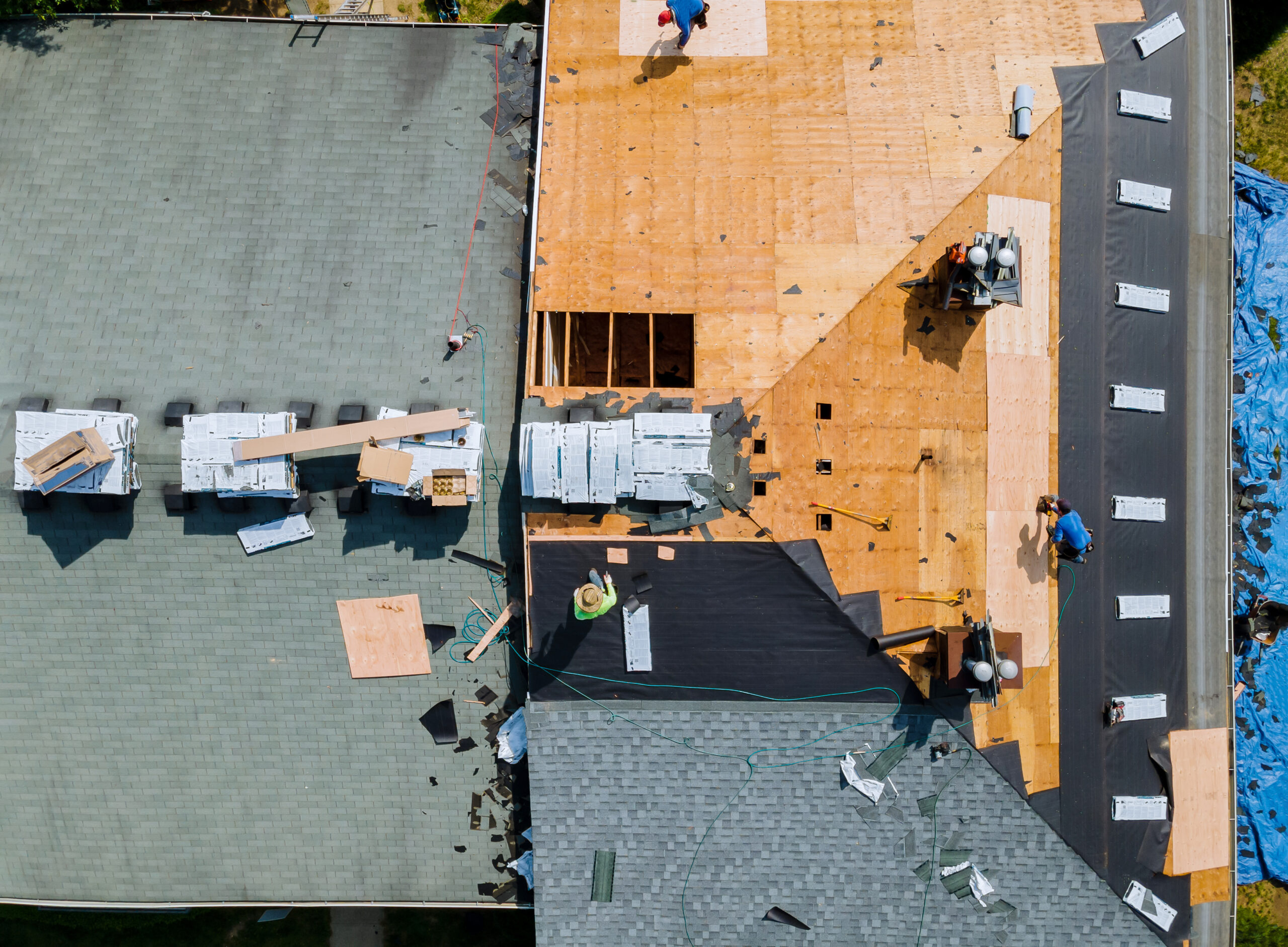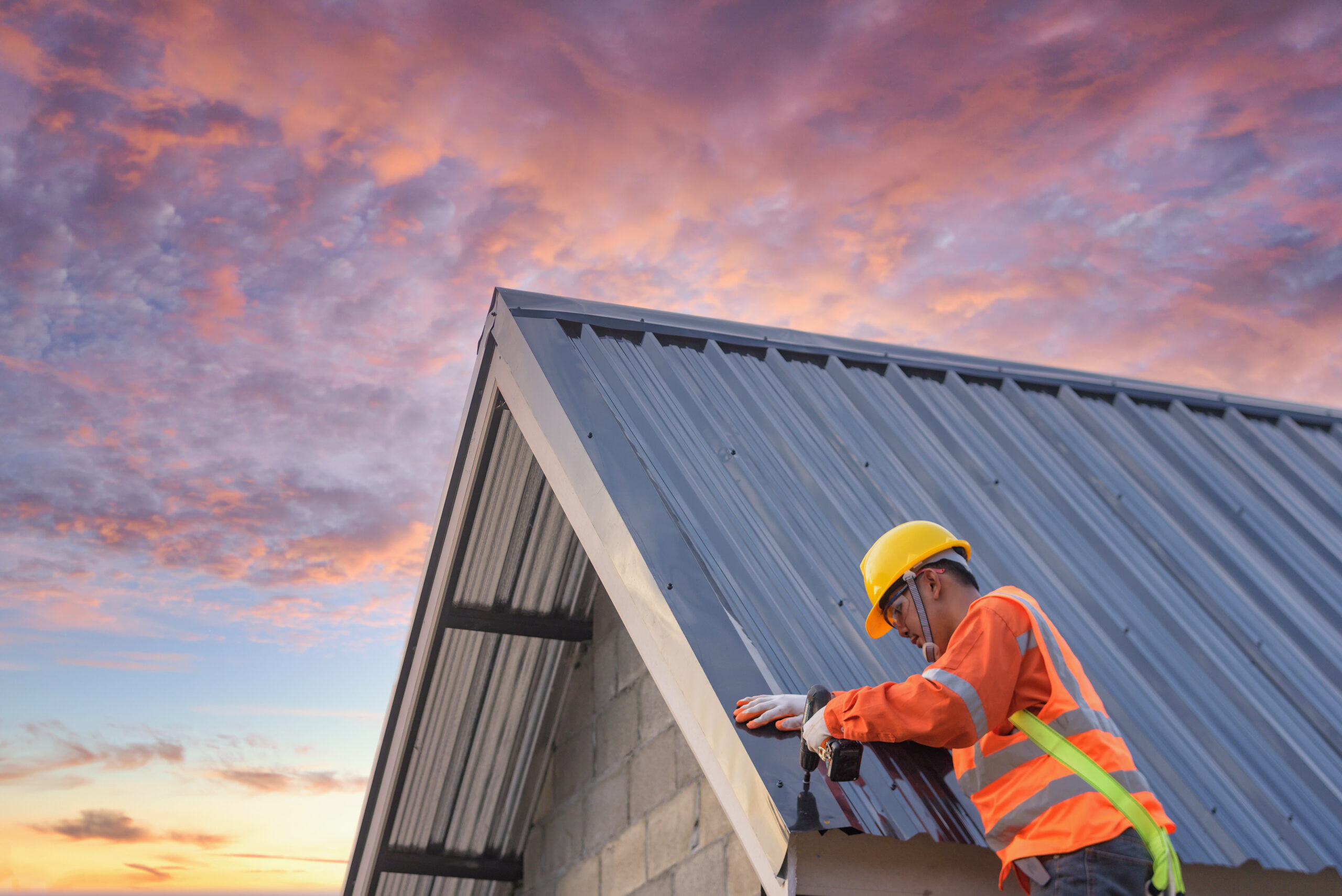The Top 6 Myths About Roofing: Busted
When it comes to our homes, the roof stands as the guardian against the elements, safeguarding us from rain, snow, and the scorching sun. Despite its vital role, roofing remains a topic shrouded in myths and misconceptions. Hammersmith Roofing & Construction Co. is here to debunk some of the most common roofing myths and shed light on the truth behind them.

Myth 1: A New Roof Can Be Installed Over the Old One
One prevalent misconception is that it’s perfectly fine to install a new roof directly over the existing one. This may seem like a time and cost-saving solution, but it’s essential to understand the risks involved. Overlaying a new roof on an old one can lead to hidden issues such as trapped moisture, uneven surfaces, and compromised structural integrity. Over time, these issues can escalate, resulting in more extensive and costly repairs.
The Truth: It’s highly recommended to remove the old roofing material before installing a new one. This process allows for a thorough inspection of the roof deck, addressing any underlying problems, and ensuring a proper installation of the new roofing material. While it might involve a bit more upfront cost and effort, the long-term benefits and durability far outweigh the initial inconvenience.
Myth 2: Roofing Materials Are All the Same
Not all roofing materials are created equal. Some homeowners believe that as long as their roof keeps them dry, the type of material doesn’t matter. However, different materials offer distinct benefits in terms of longevity, energy efficiency, aesthetics, and maintenance requirements.
The Truth: There is a wide variety of roofing materials available, including asphalt shingles, metal, tile, slate, and more. Each material has its own set of advantages and disadvantages. For instance, asphalt shingles are cost-effective and easy to install, while metal roofs are highly durable and energy-efficient. The choice of roofing material should be based on factors such as your budget, climate, architectural style, and long-term goals for your home.

Myth 3: A Leaky Roof Only Needs Repair
Discovering a leak in your roof might not seem like a major issue, especially if it’s just a small drip. However, overlooking a leak can lead to more significant problems down the road. Water infiltration can cause damage to the roof structure, insulation, and even the interior of your home, leading to mold growth and compromised indoor air quality.
The Truth: While it’s essential to address leaks promptly, it’s equally important to identify and rectify the root cause of the issue. Sometimes, a leak might be a symptom of a more extensive problem, such as deteriorated flashing, damaged shingles, or improper installation. Ignoring these underlying issues could result in recurring leaks and further damage.
Myth 4: Metal Roofs Are Noisy
The idea of a metal roof can conjure up images of rain drumming loudly on the surface, leading some homeowners to believe that metal roofs are excessively noisy, especially during rainstorms.
The Truth: Modern metal roofing materials are designed with soundproofing in mind. They are installed over insulation and underlayment that dampens the sound of rain or hail. In reality, metal roofs are no louder than traditional asphalt shingle roofs during rainfall. Additionally, the benefits of metal roofing, such as durability, energy efficiency, and aesthetic appeal, often outweigh any minor concerns about noise.

Myth 5: Roofs Last Forever
It’s easy to assume that once a roof is installed, it will last a lifetime without needing much attention. This misconception can lead to neglecting routine maintenance and inspections.
The Truth: While some roofing materials have longer lifespans than others, no roof is truly everlasting. Factors such as weather conditions, maintenance practices, and the quality of the original installation all play a role in determining a roof’s longevity. Regular inspections and maintenance can help identify and address issues before they escalate into more significant problems, ultimately extending the life of your roof.
Myth 6: DIY Roofing Is a Good Idea
With the abundance of online tutorials and DIY guides, it’s tempting to believe that tackling roofing projects yourself can save you money. However, roofing is a complex and specialized task that requires skill, experience, and proper safety precautions.
The Truth: Roofing involves intricate details, from proper flashing installation to accurate sealing techniques. A small mistake during installation can lead to leaks, improper ventilation, and other issues. Additionally, working on a roof without the necessary safety equipment can result in serious accidents. It’s always best to leave roofing projects to experienced professionals who have the knowledge and tools to ensure a safe and effective installation.

Debunking these common myths about roofing is essential for homeowners to make informed decisions about their roofs’ care and maintenance. While these misconceptions might have persisted, understanding the truth behind them will help you prioritize the right actions to protect your home and investment. At Hammersmith Roofing & Construction Co., we’re dedicated to providing reliable roofing solutions based on industry expertise and proven practices. Your home deserves the best roof, and knowing the truth about these myths is the first step toward ensuring its longevity and performance. Give us a call today!





